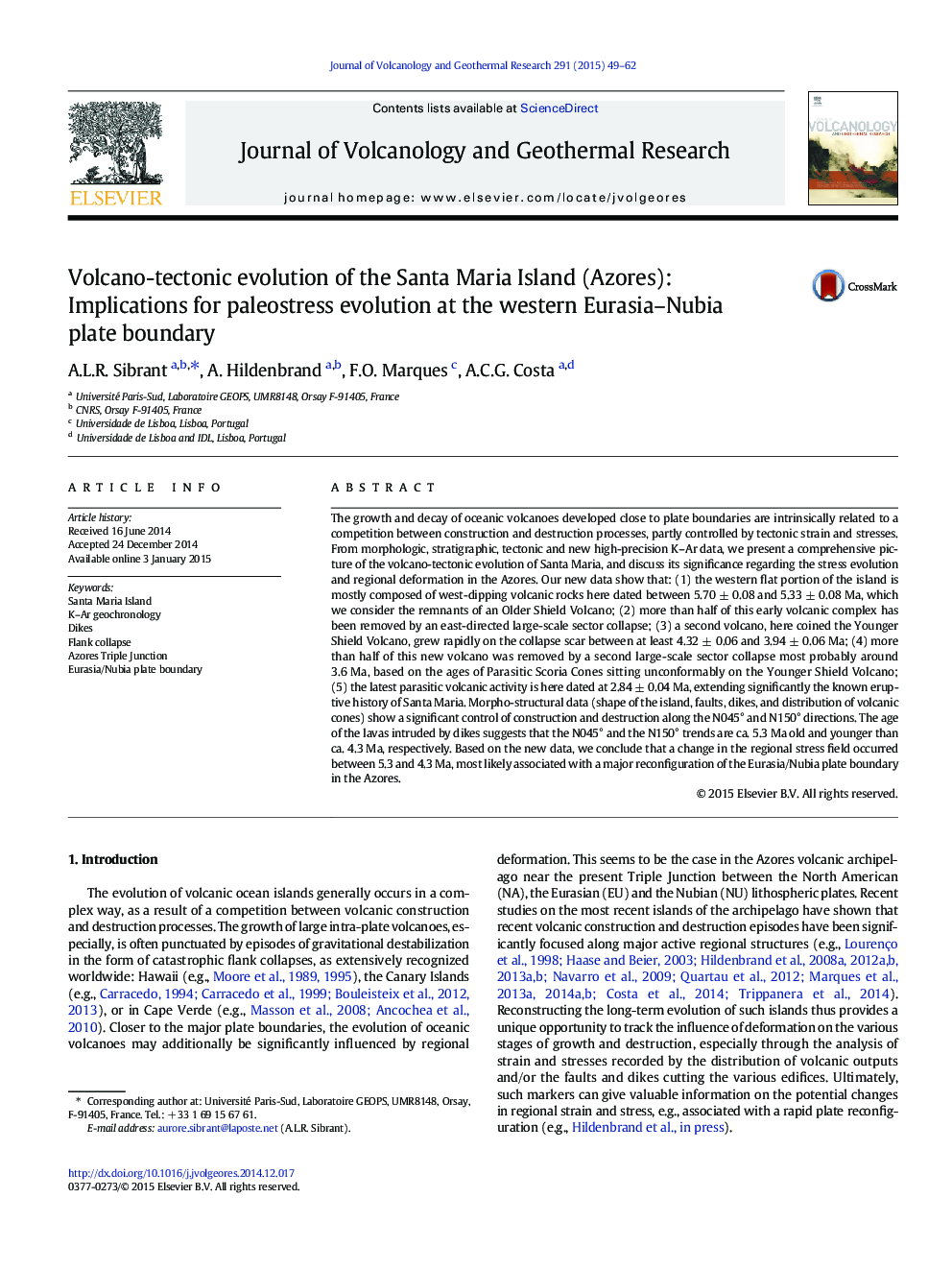| Article ID | Journal | Published Year | Pages | File Type |
|---|---|---|---|---|
| 4712932 | Journal of Volcanology and Geothermal Research | 2015 | 14 Pages |
•S. Maria Island is located close to the unstable Eurasia–Nubia plate boundary.•We investigate the meaning of S. Maria volcanism in this geodynamic setting.•We propose a new stratigraphy and a new multi-stage evolution for S. Maria.•We recognize 2 flank collapses likely related to the regional tectonics.•From the major change in dike trend, the stress field changed ca. 5.3–4.3 Ma.
The growth and decay of oceanic volcanoes developed close to plate boundaries are intrinsically related to a competition between construction and destruction processes, partly controlled by tectonic strain and stresses. From morphologic, stratigraphic, tectonic and new high-precision K–Ar data, we present a comprehensive picture of the volcano-tectonic evolution of Santa Maria, and discuss its significance regarding the stress evolution and regional deformation in the Azores. Our new data show that: (1) the western flat portion of the island is mostly composed of west-dipping volcanic rocks here dated between 5.70 ± 0.08 and 5.33 ± 0.08 Ma, which we consider the remnants of an Older Shield Volcano; (2) more than half of this early volcanic complex has been removed by an east-directed large-scale sector collapse; (3) a second volcano, here coined the Younger Shield Volcano, grew rapidly on the collapse scar between at least 4.32 ± 0.06 and 3.94 ± 0.06 Ma; (4) more than half of this new volcano was removed by a second large-scale sector collapse most probably around 3.6 Ma, based on the ages of Parasitic Scoria Cones sitting unconformably on the Younger Shield Volcano; (5) the latest parasitic volcanic activity is here dated at 2.84 ± 0.04 Ma, extending significantly the known eruptive history of Santa Maria. Morpho-structural data (shape of the island, faults, dikes, and distribution of volcanic cones) show a significant control of construction and destruction along the N045° and N150° directions. The age of the lavas intruded by dikes suggests that the N045° and the N150° trends are ca. 5.3 Ma old and younger than ca. 4.3 Ma, respectively. Based on the new data, we conclude that a change in the regional stress field occurred between 5.3 and 4.3 Ma, most likely associated with a major reconfiguration of the Eurasia/Nubia plate boundary in the Azores.
